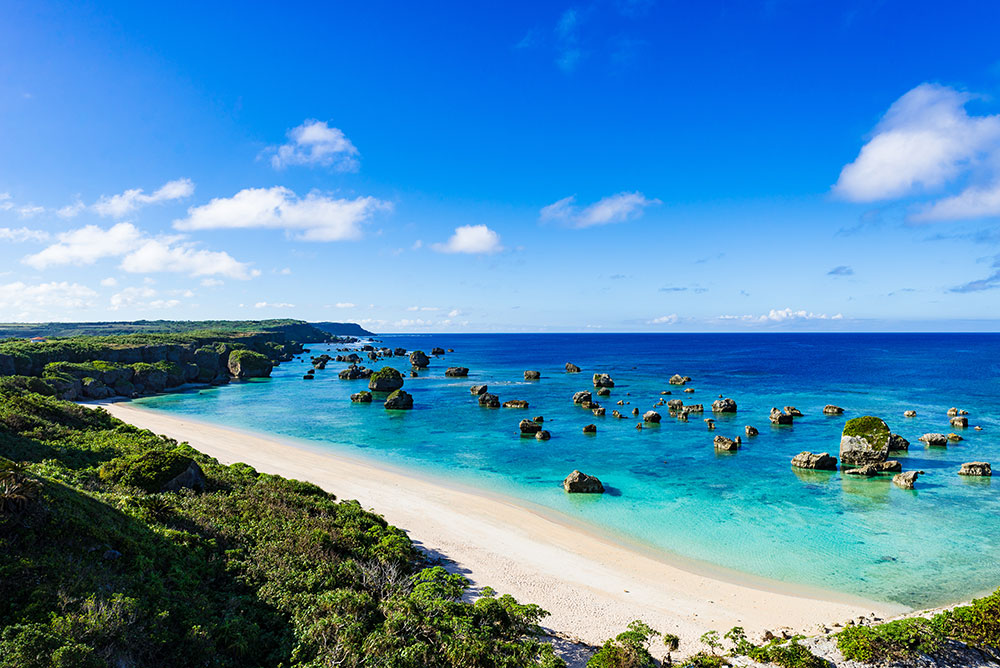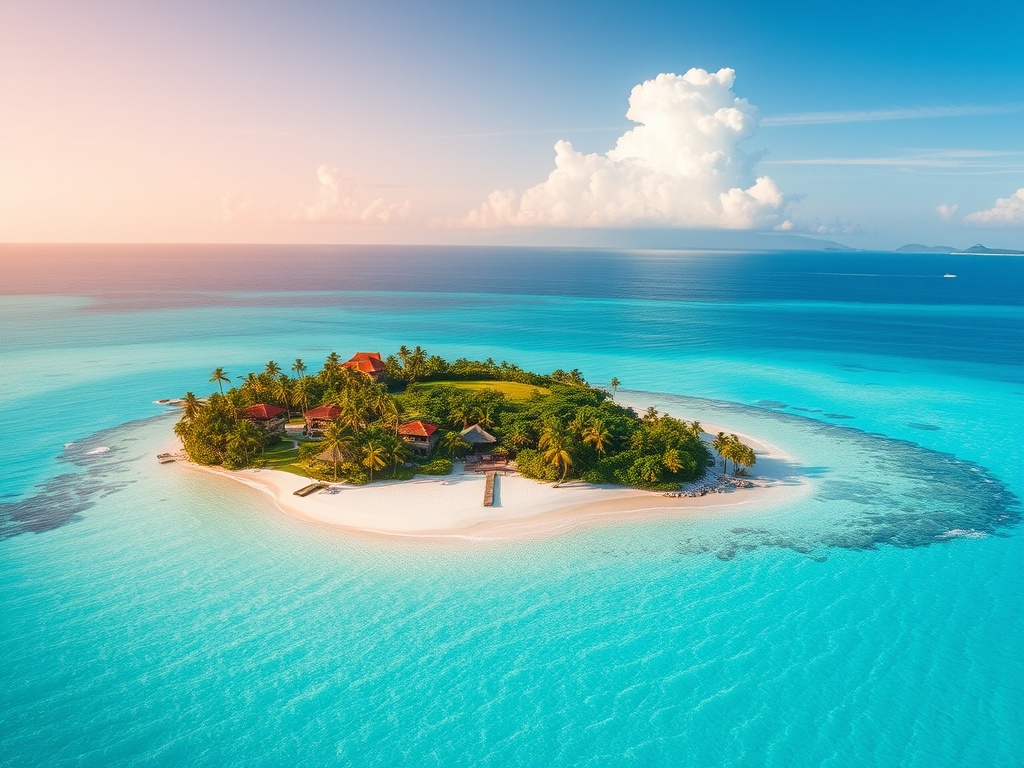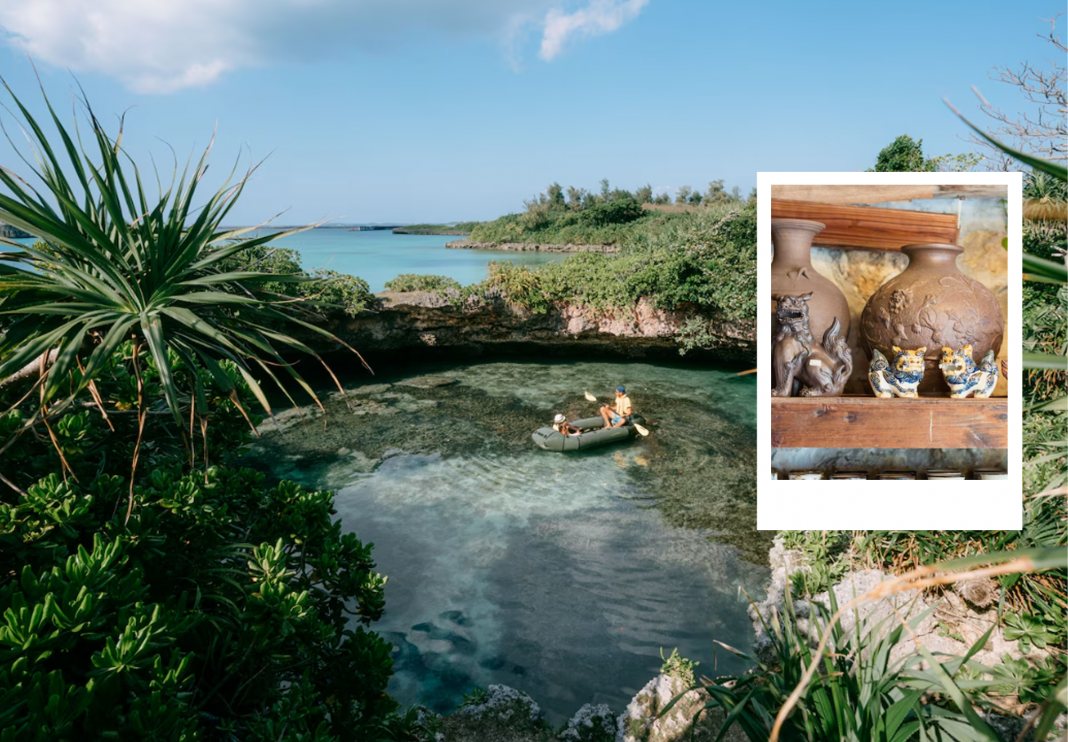Stretching like a tropical necklace across the East China Sea, Japan’s Ryukyu Islands blend rich cultural traditions, deeply spiritual landscapes, and lush natural beauty. From karate’s origins to sacred forests and coral-ringed beaches, this is where ancient heritage and warm island life exist in vibrant harmony. Here’s everything you need to plan an unforgettable visit.
A land of gods, gardens, and karate
Legend tells that the Ryukyu Islands were formed by the goddess Amamikyo, who descended from the heavens into the sea south of modern-day Okinawa. That sense of myth and spirituality still lingers in the air—especially in sacred forests, historic royal gardens, and centuries-old dojos.
The Ryukyus thrived as the Ryukyu Kingdom for over 450 years, acting as a cultural and commercial bridge between Japan, China, and Southeast Asia. Though officially incorporated into Japan as Okinawa Prefecture in 1879, the islands retain a distinct identity—seen in their traditional crafts, cuisine, and enduring spiritual customs.

A visit to the Ryukyu Islands can begin in Naha, Okinawa’s capital, where cobblestone paths like the Shuri Kinjo-cho road lead you to the historic Shuri Castle, currently under renovation but still central to the island’s cultural narrative. Further afield, the Shikinaen Royal Gardens offer a peaceful look into the refined aesthetics of the Ryukyuan royals. To deepen your understanding, join a lesson at the Okinawa Karate Kaikan, where local sensei teach this homegrown martial art that fuses Japanese and Chinese techniques. Then walk into the forested path of Sefa Utaki, the most sacred site in Ryukyuan spirituality—still revered today and open to respectful visitors.
Nature, adventure, and the Blue Zone
The natural world isn’t just scenery in Okinawa—it’s part of the islanders’ spiritual makeup. In the north, Yambaru National Park—a UNESCO World Heritage Site—is a haven of mangroves, rare endemic species, and hiking trails perfect for slow exploration.
Offshore, the clear turquoise waters of the archipelago offer world-class scuba diving and snorkeling. The Kerama Islands near Okinawa Honto are particularly beloved for coral reefs, sea turtles, and whale watching in early spring. For a slower pace, explore the traditional pottery village of Yachimun no Sato, where wood-fired kilns and artisans keep Okinawa’s ceramics traditions alive. Or shop for Ryukyu glass in Naha’s Tsuboya district, a historic area that’s long served as a creative heart for local makers.
When to visit
Spring (March–May): Perhaps the most balanced time to go, spring offers warm, breezy weather perfect for hiking, diving, and enjoying festivals like the dragon boat races in May.
Summer (June–August): Expect high temperatures, humidity, and peak crowds. Rain and typhoons are common in June and July, so plan for sudden weather shifts. Still, it’s also the best time for water sports and marine wildlife sightings.
Fall (October–November): Cooler, dryer air makes fall ideal for visiting. Cultural festivals like the Naha Tug-of-War and Paantu Mud Festival on Miyako-jima reveal the islands’ deeply rooted, often quirky, traditions.
Winter (December–February): With fewer tourists and cooler temps, winter offers a more tranquil experience—just pack a light jacket for the evenings.
Island hopping through Okinawa Prefecture

Okinawa is not a single island, but a diverse archipelago of over 160 islands—49 of which are inhabited. These fall into three main groups:
Okinawa Islands: Okinawa Honto, the largest island, houses the capital Naha, Shuri Castle, and many cultural sites. North of the island is Yanbaru National Park, while to the west, the Kerama Islands promise white sands and abundant marine life.
Miyako Islands: These sugarcane-covered islands are home to stunning coral reefs and the famously vivid “Miyako blue” waters. Powder-fine beaches and tranquil lagoons make them perfect for kayaking, snorkeling, and diving.
Yaeyama Islands: Closer to Taiwan than mainland Japan, the Yaeyama group includes Ishigaki, Taketomi, and Iriomote islands. This is Okinawa’s wildest region, with dense jungles, rivers perfect for paddling, and villages where time seems to stand still.
Where to stay
Rosewood Miyakojima: Opened in 2025, this boutique retreat on Miyako Island is surrounded by sugarcane fields and deeply infused with local culture. The Asaya Spa offers healing rituals, and the hotel’s design reflects Ryukyuan traditions in modern, luxurious style.
Halekulani Okinawa: Set on one of Okinawa’s most celebrated beaches, Halekulani offers a range of activities, from marine excursions to guided hikes in Yambaru National Park. The spa and fine dining options are among the best in the region.
Treeful Treehouse, Nago: For an immersive nature experience, this eco-resort in northern Okinawa offers stays in sustainable treehouses, along with forest bathing, a waterfall sauna, and bonfire meals featuring local ingredients.
Hoshinoya Okinawa: Located on the coast, this luxury resort offers 100 oceanfront villas and a full slate of cultural experiences—karate classes, beachside meditation, and traditional sanshin performances by the sea.
What to eat
Okinawan cuisine is shaped by island ingredients, longevity wisdom, and Chinese and Southeast Asian influences. At Makishi Public Market in Naha, browse fresh seafood, jimaji (a silky, peanut-based tofu drink), and even exotic fare like smoked sea snake.
Close by, Naha’s Kokusai Dori shopping street is a hotspot for “senbero”—cheap drinks and snacks in lively izakaya. For an elegant meal, head to Touyadokoro Fuan for peanut tofu and bitter melon stir-fry served on local ceramics, or Sui Dunchi for Agu pork shabu-shabu and Okinawa soba.
Don’t miss roadside markets where you can pick up sata andagi (Okinawan donuts), shikuwasa citrus, and even souvenirs like local salt or handmade pottery. If you’re feeling adventurous, try a glass of awamori, Okinawa’s potent rice spirit, distilled since the 15th century.
Practical tips
English is not widely spoken outside major hotels, so prepare accordingly. Book your accommodations and tours in advance, and bring plenty of Japanese yen, as credit cards aren’t always accepted.
From mainland Japan, you’ll fly into Okinawa’s Naha Airport, about three hours from Tokyo. While taxis and buses exist, renting a car (or arranging transfers via your hotel) is the most efficient way to explore the islands—especially the more remote ones. Tipping isn’t expected, but politeness is. Respect for sacred places, local customs, and natural spaces is essential.
The Ryukyu Islands offer more than tropical beaches—they’re a soulful, story-rich destination where ancient beliefs, martial arts, and untouched nature meet. Whether you’re meditating under banyan trees or eating soba beside a waterfall, you’ll leave Okinawa with more than memories—you’ll carry a deeper sense of connection.



